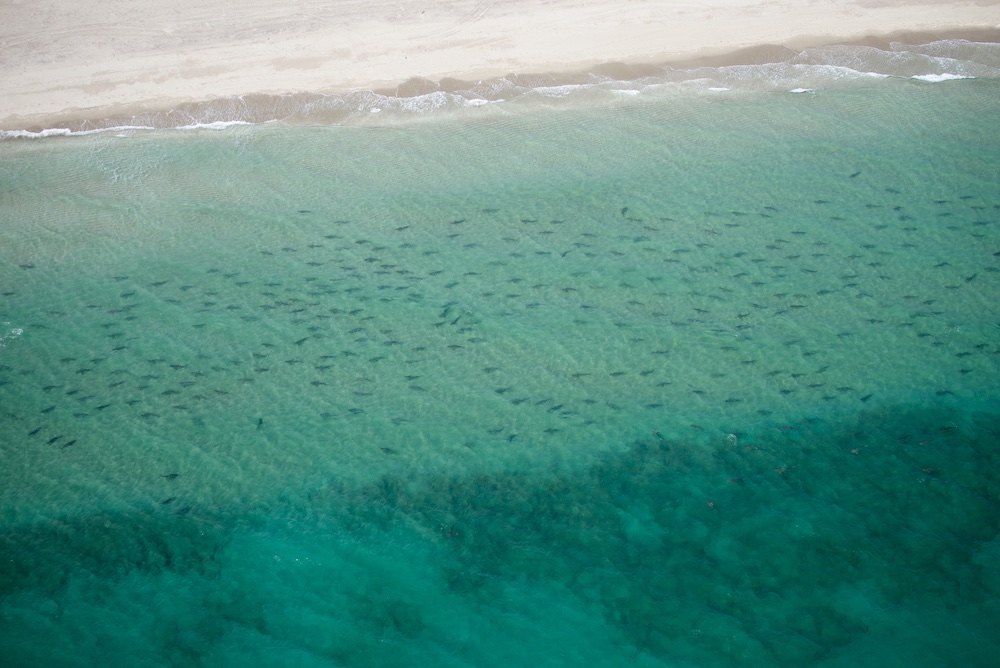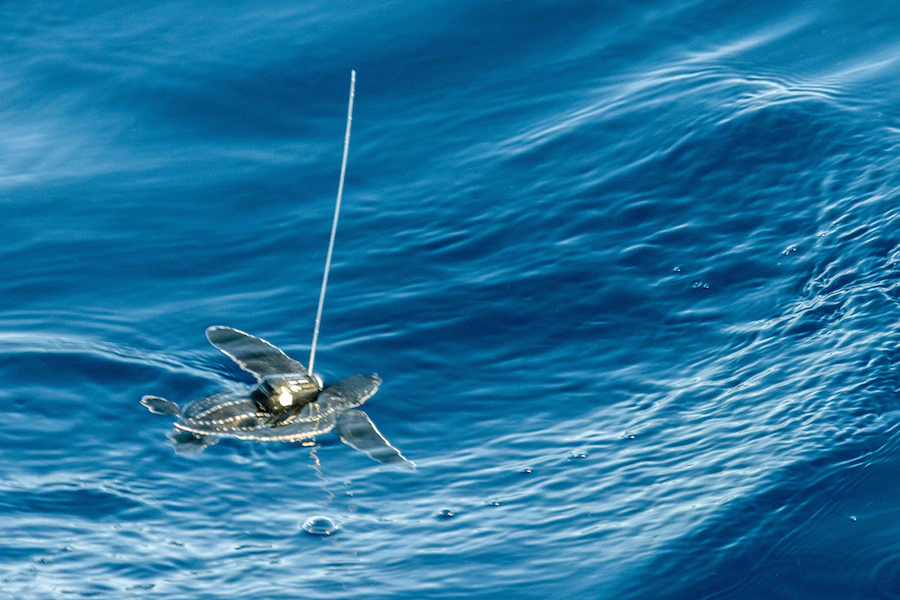

Each winter, there are thousands of blacktip sharks just off our coast. Since 2011, we have flown an airplane along the coast to count the number of sharks from Miami to Jupiter. A video camera records the number of sharks within 200m of the beach. We have found the greatest number of sharks in February and March around Palm Beach. FAU researchers also tag blacktip sharks with tracking devices that show where the sharks go when they leave southeastern Florida. They leave here in the spring and travel up the coast to Georgia and the Carolinas where females give birth and mating occurs in the summer. Many of the sharks migrate as far north as Long Island, New York by late summer.
As water temperatures cool in the fall, the sharks start to migrate south back to Florida. Because the movement of the sharks is so closely associated with water temperature, warming oceans will affect their distribution and cause the sharks to migrate farther north in the summer, and not come down as far south in the winter. We may eventually lose our wintertime shark visitors.
 Tracking Leatherback Lost Years
Tracking Leatherback Lost YearsSea turtles are migratory animals, making them especially difficult to study during certain stages in their life. Scientists have learned a lot about adult females because they are accessible when they nest on beaches. Similarly, the biology of eggs and hatchlings has received a lot of attention. Yet we don’t have a good understanding of what happens between these life stages, a long period of life termed “the lost years” by Archie Carr. The FAU Marine Lab, Upwell Turtles, Mercator Ocean International, and Lotek Wireless have partnered to tag neonate leatherbacks raised in the lab with prototype “micro-satellite” tags to track their movements off the coast of Florida.
These are the first steps for understanding where little turtles go to grow up.
Leatherback hatchlings collected from natural nests were raised in the FAU Marine Lab by Dr. Jeanette Wyneken’s leatherback specialist team. Once they weighed at least 100 grams, they were ready for their specially made satellite tags. These tags are designed to be “shed” after about 2-4 months of growth after deployment. The data generated from these tags will provide some idea of where these young turtles go and what type of habitats serve as their offshore nurseries areas.